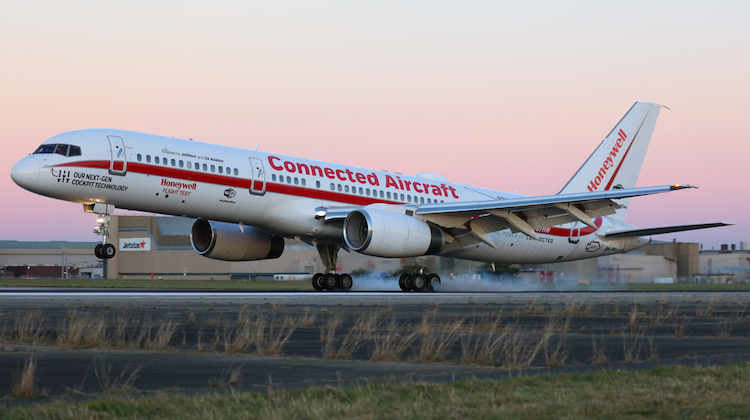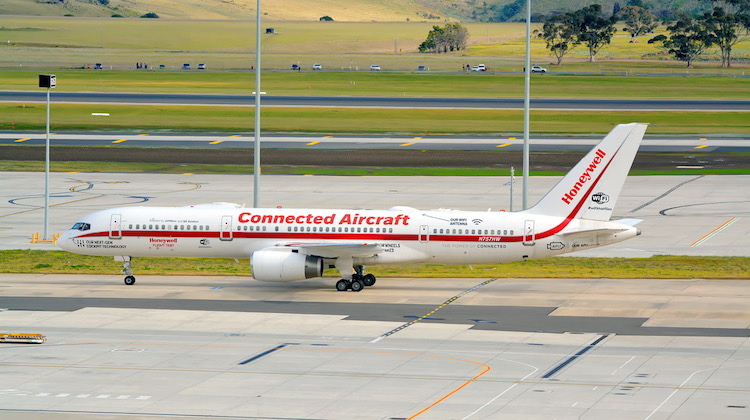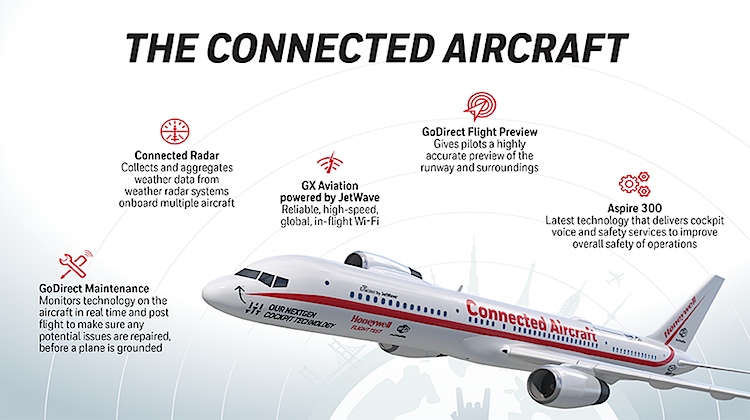
Honeywell’s around-the-world tour of its Boeing 757 flying tech lab has reached Australia.
The 757, which stands out because of a third pylon behind the cockpit, touched down in Melbourne on July 21, having flown in from Jakarta.
It then visited Canberra on Tuesday July 25, before taking off for Fiji and Hawaii ahead of concluding its travels in Phoenix, according to the Honeywell website.
The aircraft’s two-month “Power of Connected” world tour began in San Francisco at the end of May and is due to visit more than 10 countries. So far, it has been to Mexico City, the Paris Airshow, Dubai, Delhi and Tokyo, among other destinations.

The aircraft is demonstrating Honeywell’s inflight internet hardware JetWave, which utilised the Inmarsat Global Xpress network of three Ka-Band satellites.
Jetwave received US Federal Aviation Administration certification for the Boeing 757 in January 2016 after 180 hours of flight tests on board the aircraft.
And in June, the European Aviation Safety Agency certified the Global Xpress technology for the Airbus A320 family of aircraft.
It has also received regulator certification for the Bombardier Global 5000 and 6000 business jets.
The aircraft, N757HW, visited Sydney and Auckland last August as part of a round-the-world flight testing and demonstrations of the JetWave inflight wireless internet system.
The fifth 757 built, it was delivered to Eastern Airlines in 1983. It flew with the now defunct carrier until 1985, before it was refitted for test flights on technology such as weather radar systems, engines and internet.
In addition to the potential benefits to the passenger experience inflight wireless internet brings such as real-time television, video conferencing and email, the 757 also demonstrates some of the technical applications available on a connected aircraft.
These included Honeywell’s GoDirect Flight Preview application that provides three-dimensional previews of the runway and surrounding terrain before takeoff, and the GoDirect Weather information service for pilots that offers real-time data on conditions on the flight path and allows other pilots in the area to share information about weather.
Further, Honeywell’s GoDirect Fuel Efficiency software helps minimise fuel consumption through determining the most efficient flight paths, while its GoDirect Connected Maintenance application minimises aircraft downtime through helping airlines be more proactive and predictive when scheduling checks.

Honeywell Aviation explained its Connected Aircraft in a video on its YouTube channel published in April 2017
In this part of the world, Air New Zealand has chosen Inmarsat’s new Global Xpress (GX) satellite constellation for its inflight wireless internet.
The Star Alliance member has said previously it would commence trials some time in the second half of calendar 2017.
Australia’s two largest carriers Qantas and Virgin Australia started offering inflight internet wi-fi on a trial basis in April.
At Qantas, connectivity is currently offered to passengers on board a single Boeing 737-800, provided by ViaSat’s global satellite network and the National Broadband Network’s Sky Muster satellites.
Meanwhile, Virgin chose Gogo and Optus as its technology partners for the its inflight internet wi-fi service. The airline also has one 737-800 for its trial.











